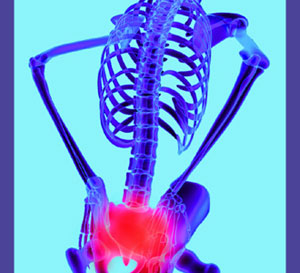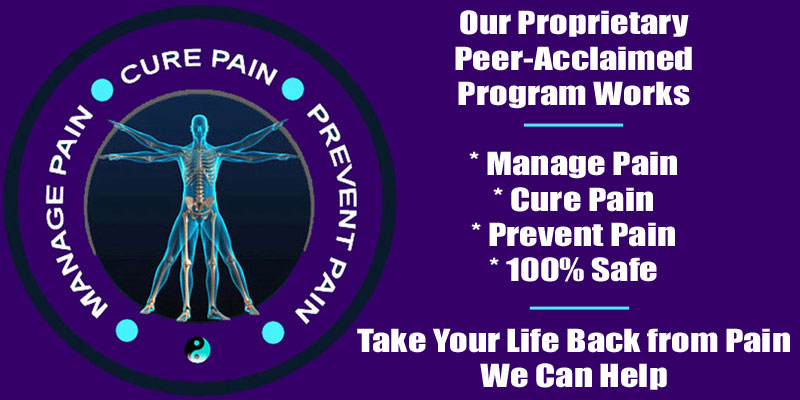
Lumbar nerve pain is often suspected as the causative process of lower back symptoms and sciatica. Typically, compression of one or more the lumbar nerve roots is the theorized mechanism of symptomatic action, although other issues, like chemical nerve irritation, might be explanative in particular circumstances.
The lumbar spinal nerves are often designed as the source of lower back pain. However, in many scenarios, this theory turns out to be blatantly incorrect. Many patients are instead suffering from muscular lower back pain while structural issues are unfairly taking the blame of causing nerve compression. In other cases, the lumbar nerves are indeed the source of suffering, but no compression is taking place. Instead, there is another reason why the nerves are signaling pain and in virtually all circumstances, this reason is caused by a nonstructural, non-mechanical process.
This fascinating article presents evidence that the vast majority of lumbar nerve pain diagnoses are incorrect. We will further provide the true reason why most people are suffering from lower back pain, despite being misdiagnosed with lumbar nerve root compression.
Lumbar Nerve Pain Defined and Explained
All pain messages travel on nerves between their source and the brain. However, some pain actually originates in the nerves, most often due to mechanical compression or from chemical irritation when these nerves exist in the spine.
Many structural conditions are typically blamed for causing nerve compression in the lumbar region and some of these conditions are universally experienced in adults, including degenerative disc disease, osteoarthritis and facet joint degeneration. Other reasons are virtually universal and observed in the vast majority of adults, including herniated discs, central spinal stenosis and changes in lumbar lordosis. Some conditions are blamed for causing nerve compression, but only exist in select individuals, such as spondylolisthesis, lumbar scoliosis and various types of structural abnormalities like sacralization, transitional vertebrae and the like.
Lumbar nerve pain might result if a nerve is compressed within the central spinal canal, in the lateral recess or in the foraminal space. Chemical irritation of a nerve can also cause pain and usually occurs within the central spinal canal, but can occur elsewhere, depending on the type and location of the herniated disc which is leaking the irritating nucleus pulposus proteins from its compromised outer annulus fibrosus.
Lumbar Nerve Pain Misconceptions
The idea of most chronic lumbar back pain conditions is that the cause is usually some variety of nerve compression. The process enacting this compression can change from patient to patient and might include desiccated discs, herniated discs, arthritic accumulations causing spinal stenosis or foraminal stenosis, facet joint changes causing foraminal stenosis, vertebral migration, changes to the alignment of the central spinal canal and/or foraminal openings caused by scoliosis or lordosis and other typical origins.
Research clearly shows that most of thee conditions are incidental to lower back pain and exist as often in people who have no pain. Additionally, the symptoms of most severe and chronic lower back pain exist in the soft tissues of the dorsal anatomy, mainly the postural and paraspinal muscles. The pain is not sourced in the spine itself. Therefore, the idea that most of the structural issues diagnosed as the cause of pain in most patients is bogus. It is really that simple…
In other cases, spinal symptoms do seem to exist and correlate by location and expression. However, although these types of pain will without a doubt be blamed on some structural issue, the idea of compression being the true causative process is often also incorrect. In more cases than not, the true underlying source of nerve pain and dysfunction is not compression, but instead regional ischemia.
Lumbar Nerve Pain Truths
Back muscle pain is usually ischemic in nature. In some cases, it might be due to injury, innervation issues or imbalances, but these cases are not typical. Lingering severe pain with the usual accompanying spasms, tingling, weakness and paresthesia seen most often in clinical settings is a direct result of regional oxygen deprivation.
Similarly, this ischemic process can target the spinal lumbar nerves directly also, or instead of the muscles in the regional area. This is why so many people test positive for spinal-sciatica, with the usual symptoms in the legs correlating to a particular nerve root, yet rarely respond well to treatments aimed at structural defects. Disc surgery fails more than any other type of back surgery. The majority of disc procedures fail over timelines of 7 years and the only success many achieve is due to placebo.
Meanwhile, although knowledge therapy does nothing at all to address any type of compression or nerve irritation syndrome, the treatment works better than all other care practices for chronic lower back pain. This fact alone proves that ischemia is the true source of most of these persistent lumbar pain conditions. We strongly recommend reading more about ischemia before subscribing to the theory of nerve compression being responsible for your chronic lower back pain.





